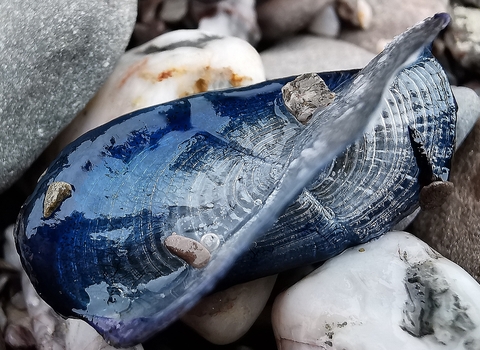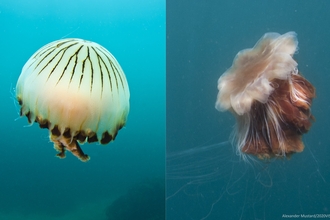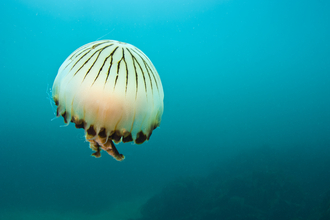
By-the-wind Sailor by Vikki Muldowney
By-the-wind-sailor
These mysterious and beautiful creatures rely on warm ocean currents to ‘sail’ them around the world... not a bad life?
Scientific name
Velella velellaWhen to see
September to MarchSpecies information
Category
Statistics
Oval float up to 10 cm in length but usually smallerConservation status
Commonly found floating on the surface of the warmer waters of the world’s oceans, but very little is known about their lives.
Habitats
About
This incredibly strange and beautiful species is known as a colonial hydroid. They are similar to the Portuguese Man O'War as they are made up of a colony of tiny individual animals. They are not true jellyfish.Its characteristic sail gives the animal its name, 'by-the-wind-sailor'. The sail allows the organism to catch the wind and travel on ocean currents, using its stinging tentacles to prey on young fish and other small animals while it travels. They are at the mercy of the winds and so are usually found washed up in their hundreds, or sometimes even thousands, after stormy winter weather.




